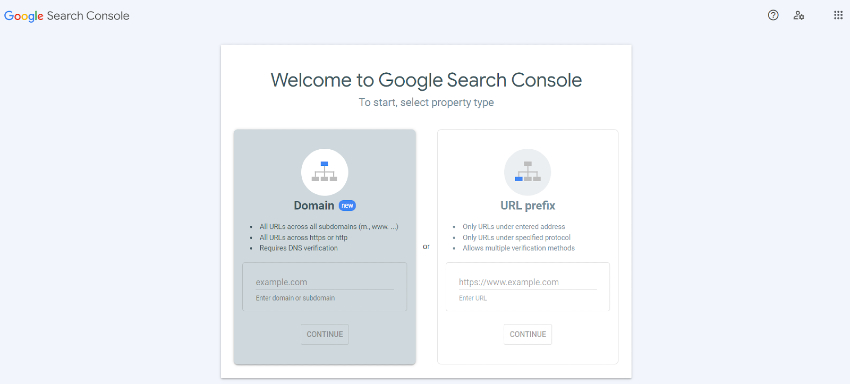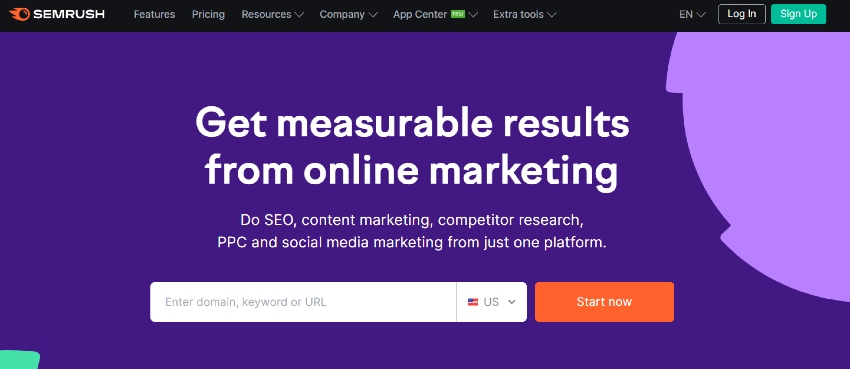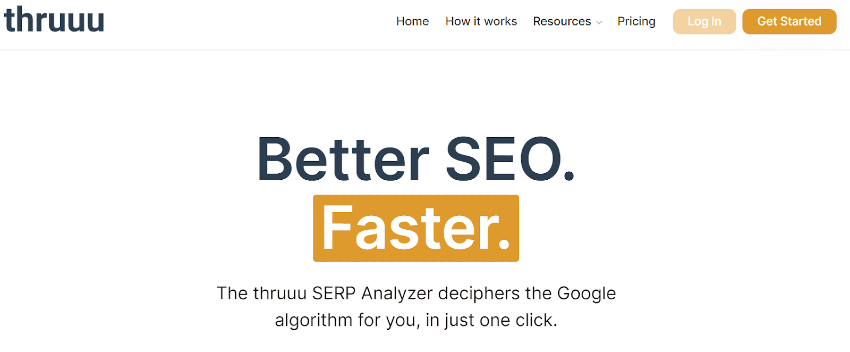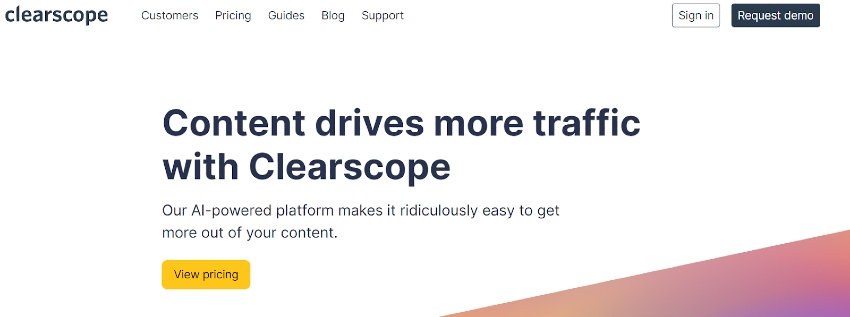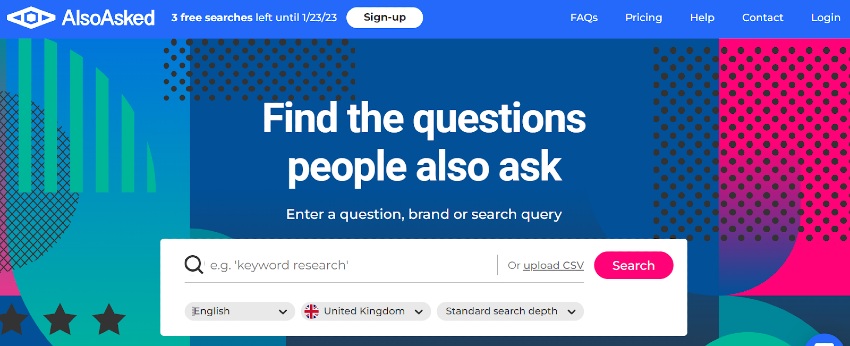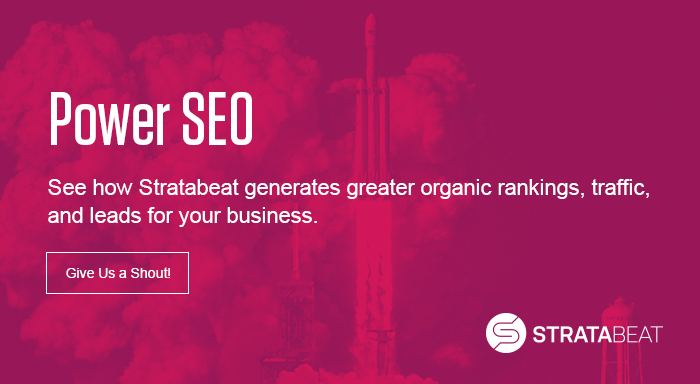SEO Management: Learn How to Be More Efficient & Effective

B2B Companies generate 2X more revenue from organic search (SEO) than any other channel. SEO is one of the most effective ways to generate traffic, leads, and revenue for any B2B business. Yet, in order to achieve massive success with organic search, you should first master SEO management.
SEO management involves SEO strategy, workflows, processes, tools, and team management. It helps ensure that you achieve your organic search goals. It also ensures that nothing slips through the cracks, that deadlines are met, and that SEO is done in an efficient and effective manner.
What is SEO Management?
SEO management is the administration and execution of SEO strategy, planning, processes, systems, tools, performance analysis, and organization of your team. SEO management generally encompasses the entire process of making a website “search engine friendly” so that it may rank higher in search engine results pages (SERPs). Yet it also includes offsite factors such as authority building.
SEO management includes, but is not limited to:
- Goal setting and planning
- Definition of workflows and processes
- Resource allocation
- Prioritization of SEO tasks
- Audience, topic, and keyword research
- Question research
- Technical SEO
- On-page optimization
- Local SEO (when applicable)
- Content SEO
- Off-site SEO (including passive backlinks)
- Authority building
- Digital PR
- Tracking, analysis, and reporting
- Inter-departmental coordination and communication
The goal of SEO management in B2B is to improve a website’s ranking in the SERPs so that it may receive more organic traffic, and, ultimately, generate more qualified leads.
B2B SEO is a multifaceted and ongoing process, as efforts should be continually tweaked and updated to keep up with the ever-changing search engine algorithms. It is also important to continuously monitor website traffic and lead generation metrics so that you can adjust SEO initiatives accordingly to improve performance over time.
Construct the SEO Team
For maximum impact, SEO project management is best done by a team. There are many tasks involved in SEO, and in most cases, a team structure helps you perform them consistently, reliably, comprehensively, and in a timely manner.
Each SEO task requires specialized skills. For example, topic, question, and keyword research involves the use of keyword research tools. The software enables an SEO to identify relevant topics, search terms, related long-tail keywords, common questions that prospects are asking online, etc. On the other hand, making various page load time fixes would involve a developer adjusting the code underlying the web pages. Therefore, an SEO team should be composed of a variety of individuals with different skill sets.
Roles on an SEO team may include:
- SEO Director or Manager
- SEO Strategist/Specialist
- Content Strategist/Specialist
- Copywriter
- Editor
- Designer
- Web Developer
Foster Cross-Team Collaboration
Cross-team collaboration is essential for successful SEO management. SEO is a highly collaborative process that involves teams of individuals from a variety of disciplines.
For example, SEO strategists must work together with developers to ensure that web pages are optimized for search engines and delivered efficiently. Copywriters must work together with content strategists to create compelling, keyword-rich content. SEO strategists must collaborate closely with all stakeholders, including content strategists, copywriters, developers, and marketing teams. SEO directors/managers must ensure that all members of the SEO team are collaborating effectively, following established processes, and working towards common goals.
Cross-team collaboration can be fostered through regular meetings and open communication. Shared dashboards are also helpful to ensure that everyone is looking at the same SEO metrics and KPIs and actively monitoring results.
Choose the Right Project Management Tools
As noted, there are numerous moving pieces in SEO management. Project management tools can be used to keep track of the progress of different tasks, assign responsibilities and deadlines, and ensure that all members of the team are aligned.
There are numerous project management tools available to facilitate the process, such as:
- Basecamp
- Asana
- Monday
- Wrike
- Teamwork
- Airtable
- And more
These tools allow you to stay abreast of all the moving pieces and ensure that everything continues to move forward according to plan, including:
- Discussion boards and threads for centralized communications
- Project calendar to maintain schedules
- To-do’s to manage tasks and deadlines
- File sharing and storage
- Approvals management
- And more
How to Generate 3X More Traffic from Your Google Rankings
Ready to Increase Your Organic Traffic? Read the Post
Build Your SEO Tools Stack
Successful SEO management is impossible without the right SEO tools stack. Some of the most useful tools include:
Google Search Console (GSC)
GSC enables you to monitor the SEO status of your website and gain insights not found elsewhere. GSC displays the click-through rate (CTR) of Google search listings, what terms you are ranking for, the SEO health of pages, which pages are indexed, and more.
Google Trends
Google Trends allows you to compare search volume and trends across different keywords, countries, languages, etc. You can see which search terms are increasing in popularity, and use this information to inform your SEO strategies.
Ahrefs
Ahrefs is one of the most powerful SEO tool sets available. It allows you to perform deep keyword research, track backlinks and competitor rankings, conduct website audits, and much more. It can also monitor the SEO health of websites, identify technical SEO issues, and track keyword rankings in real-time.
Semrush
Similar to Ahrefs, Semrush is an all-in-one SEO toolkit. It has strong keyword research tools, allows you to build backlinks, and track competitor rankings. It also makes it simple to keep tabs on your own SEO projects and keyword rankings.
thruuu
thruuu is a content SEO workflow platform. It makes it simple, fast, and easy to conduct a SERP analysis and to create SEO-driven content briefs. Simply enter a primary keyword and it will scrape the top search results and give recommendations based on those results. For example, it will reveal the average word count, common keywords and headlines of top performing content, and much more.
Clearscope
Clearscope is a powerful on-page optimization tool. Input your primary keyword and it analyzes the top search results. It then provides you with dozens of related keywords to include, a recommended word count, and an overall grade for your content. Using your content grade, you can see how your content lines up against the top-ranking search results.
AlsoAsked
AlsoAsked provides you with dozens of questions to answer related to your primary keyword. These questions are based on real questions that people ask related to the search query. For example, if you type in “SEO strategy”, it provides questions like “What are the top 3 SEO strategies?” and “What is an example of an SEO strategy?” Answering these questions increases the odds of you capturing the featured snippet or secure a spot among the PAA questions in Google.
Secure Executive Buy-in
SEO is a long-term initiative. It’s a marathon, not a sprint. For your SEO strategy to be successful, therefore, executive buy-in is critical.
This could involve providing detailed performance reports to executives on a regular basis, showing them the progress of campaigns, and outlining a plan for continued success.
Executive buy-in helps you to secure long-term budget and resources and to align stakeholders.
As part of your SEO management, help executives understand the importance of investing in SEO for long-term ROI. Whereas paid media is like renting an apartment, SEO is like purchasing and maintaining a house. The long-term payoff can be huge, but that requires ongoing investment and nurturing first.
Establish Goals and KPIs
To measure the results of your SEO strategy, establish specific goals and KPIs. These goals will serve as a roadmap for your strategy. It will guide your efforts and allow you to measure the success of your efforts.
Your goals should be specific, measurable, achievable, realistic, and time-bound (SMART). Examples might include:
- Increasing non-branded organic traffic by 20% in six months
- Improving rankings for a set of priority keywords within three months
- Doubling conversions from targeted pages within the upcoming quarter
These goals serve as your North Star and help you stay on track with your SEO program. Once these goals have been established, you can begin to develop an action plan for achieving them as a centerpiece of your SEO management.
Once you have established your goals and KPIs, it’s important to track them regularly. This will give you insight into the progress of your SEO initiatives and help you make adjustments as needed. As mentioned, setting up online dashboards for your teams is beneficial for ongoing tracking of your metrics and KPIs.
7,235.7% Increase in Organic Traffic
Stratabeat Increased Organic Blog Traffic by 7,235.7% for a Client in a Hyper-Competitive Vertical. Book a Strategy Call
Effectively Manage the SEO Process
There are a number of specific steps involved in managing the SEO process.
Audience, Topic, and Keyword Research
The first step in the SEO process is audience, topic, and keyword research. This involves understanding your audience in as much detail as possible. What are their goals? Challenges? Biggest frustrations and pain points? What topics, keywords, and questions are they searching for online?
Search intent is key when doing your research. What are people actually looking for when they type in the query? How-to instructions? Thought leadership? A list of options? Or a template? Understanding the underlying intent of your target audience will help you create content that is more likely to rank and to deliver a great user experience.
Once you understand the potential topics, keywords, and questions you should target, create a comprehensive list that includes all of the terms on which you want to focus. Group related keywords into broader topics. In this way, you’ll have a list of available terms for the content creation process.
SEO Audit
It’s difficult to create an effective SEO strategy without first knowing the baseline status of your website from an SEO perspective. A comprehensive SEO audit will help you understand any technical or on-page issues that may be preventing your website from ranking.
Conducting an SEO audit involves crawling and analyzing your website to identify any potential errors, such as problematic XML sitemaps, broken links, 302 redirects, 404 error pages, duplicate content, missing title tags, etc. It also involves analyzing your backlink profile and competitors’ websites to identify opportunities for improvement.
A content audit is also important in the initial stages of the SEO process. A content audit helps you understand which pages are performing well and which pages need to be improved. It also helps you to identify strong content that thoroughly covers a topic or keyword, versus thin content that hurts your SEO performance. Through a content audit, you can identify content decay and opportunities to strengthen old content that used to perform well but needs an update.
Once your SEO audit is complete, it’s time to create an actionable plan to address any issues that were identified. This could include fixing technical problems or improving the website’s technical structure. It could also include creating new content, optimizing existing pages, or rewriting existing content.
Competitive Analysis
It’s important to understand what your competitors are doing in order to stay one step ahead. A competitive analysis helps you to identify any gaps in your SEO program compared with the competition.
Competitive analysis involves studying your competitors’ websites, looking at their backlink profiles, analyzing their content, and understanding how they are performing in organic search. For example, through a content gap analysis, you can identify opportunities for new content that capitalizes on topic areas or content formats that your competitors are ignoring.
Look for any ways you might be able to “steal” organic traffic from your competitors. This involves finding keywords for which they are ranking and then creating better content/pages around those keywords. The goal is to create content that is more valuable to users than what your competitors are currently providing.
Technical SEO
Technical SEO is an important part of SEO management and can make or break the success of your SEO program. It involves optimizing the technical structure of a website to ensure that Google crawls and indexes it properly.
Common technical issues include unoptimized URL structures, problematic URL naming, poor navigation, 302 redirects, 404 error pages, broken links, duplicate pages, and slow page load speeds. Make sure to address any of these issues prior to investing heavily in content SEO.
Also, ensure your website is properly optimized for mobile devices. Mobile-friendliness is an important ranking factor and can have a major impact on how your website ranks in organic search.
Google Search Console can provide you with insights related to the usability of your website. Go to the “Page Experience Insights” section and look for any ways you may be able to improve the overall user experience.
Another important part of technical SEO is ensuring that your website is structured in an intuitive way that makes sense to both users and search engines. It should be clear to Google how each page is related to other pages.
On-page SEO
On-page SEO is the process of optimizing the content of a website to make it more attractive to both users and search engines. This includes optimizing the title tag, H1 heading, H2 and other headings, meta description, images, internal linking, and other elements of a web page.
Optimizing your content for target keywords is a key part of on-page SEO. Your team should master SEO copywriting, as well. One aspect of this is to include the primary SEO keyword in your content piece a number of times, but another is to use related keywords throughout your content to improve its overall relevancy in organic search as well.
Tools like Clearscope, MarketMuse, and Surfer can help you know what related keywords should be sprinkled throughout your content. They can also grade your work with an SEO score to help you develop comprehensive content that performs well in Google.
Don’t forget to optimize images by including relevant alt tags and file names. This can help your images appear in image search results, which can earn you additional organic traffic.
Use short, keyword-rich URLs when optimizing your content. This helps both users and Google understand the purpose of and content on a page.
Also, include relevant internal links throughout your content. This helps visitors find related content on your website and improve its relevance in search. The anchor text helps Google to understand what each page is about.
$87,867 Monthly Traffic Value from SEO
Stratabeat Launched a New Blog and Increased Monthly Organic Traffic Value from Zero to $87,867 within 14 Months for a Robotics Company. Book a Strategy Call
Content Planning & Production
Content planning and production is a key part of any SEO program. Your content should be created with both users and search engines in mind.
Create content that is extremely valuable to audience members. Make sure your content provides value and answers their questions. In its most recent “Helpful Content” update, Google explicitly says that content should be written for users first and search engines second.
The helpful content update aims to better reward content where visitors feel they’ve had a satisfying experience, while content that doesn’t meet a visitor’s expectations won’t perform as well.
How can you ensure you’re creating content that will be successful with our new update? By following our long-standing advice and guidelines to create content for people, not for search engines. People-first content creators focus first on creating satisfying content, while also utilizing SEO best practices to bring searchers additional value.
Once you have researched relevant topics, keywords, and questions and analyzed the Google SERP (as outlined above), the next step is to create content around those topics. Make sure that you know the intent behind keywords when creating content.
Focus on creating content that is informative, engaging, and delivers a great user experience. Keep the content fresh and up-to-date.
Creating a content calendar to push the content creation process forward in a timely and reliable manner. This helps you plan content production and track progress. It also ensures that every task in the creation process is assigned to the right individual and that nothing slips between the cracks.
Content SEO
Develop a content marketing strategy to greatly boost your content performance.
The strategy may include defining:
- Audience segments
- Target audience personas
- Customer journey mapping
- Content gap analysis
- Topics
- Content formats
- Engagement strategies
- Conversion strategies
- Promotional strategies
- Success metrics
- Content performance tracking & reporting
- Etc.
Part of your content strategy should be determining the structure of your content. Atomizing your content, for example, is an effective way to get more bang for your buck from your content investments. Content atomization involves taking a main content piece and breaking it down into smaller, derivative pieces. For example, you could take excerpts from a blog post and turn them into multiple social media posts. Or, take a whitepaper and create 5-6 quick videos on the main points from the document. Or take a webinar and create 3-4 individual blog posts and various social media posts from the content.
SAP’s Ginger Shimp and her team have successfully created more than 600 pieces of derivative content for a single campaign multiple times. Content atomization is a powerful way to generate strong content ROI.
And remember, it’s not enough to simply create content. You should also distribute and promote it. Content promotion involves sharing your content on social media, creating email campaigns, and engaging with partners, employees, bloggers, influencers, etc. to get additional exposure for your content. Content promotion is just as important as content development if you want to maximize your content marketing results.
Off-site SEO
Another aspect of SEO management is off-site SEO (or off-page SEO). What this involves are activities that are performed outside of your website to improve your visibility in search.
This includes authority building such as:
- Reclamation of broken links
- Outreach to secure links from unlinked mentions
- Passive-link building strategies
- Digital PR that attracts not only attention and traffic, but also mentions and backlinks
- Influencer collaborations
- Etc.
Link building is an important part of off-site SEO as it helps demonstrate to Google that your content is seen as a valuable resource by others. The first and most important aspect of link-building is creating content that is so valuable that others can’t help but link to it. We call this “passive linkbuilding”.
What type of content is highly linkable? Content that is unique and provides value that can’t be found anywhere else. This can include original research, unique insights or perspective, and so on.
Digital PR is another powerful approach to off-site SEO. It helps you break through the noise and expand reach and brand awareness. In addition, it should be newsworthy or noteworthy enough to generate a good amount of backlinks.
Measurement and Continual Optimization
Measuring the results of your SEO activities and then adjusting your approach based on those results is essential for SEO project management success. Your measurements should be based on the goals and KPIs that you established early in the SEO process.
For example, you can use Google Analytics to track different metrics related to your site such as organic traffic and conversions. You can use tools such as Accuranker to track Google rankings. Use software such as Afrefs or Majestic to track referring domains and backlinks. And you can use behavioral analysis tools such as Mouseflow, Fullstory, and Decibel to track user experience.
Reporting
Finally, there is the reporting aspect of SEO management. Reporting helps you track your progress and communicate the results of your efforts to other stakeholders.
Understandably, reporting can be a time-consuming aspect of SEO project management. You’ll want to create reports that summarize the metrics you’re tracking and present them in an easy-to-understand format.
By using automated online reporting tools such as Google’s Looker Studio, Grow, or DashThis, you can easily create visually appealing, easy-to-understand SEO performance reports to keep everyone informed of progress toward your goals.
FAQs
Why is SEO important for B2B companies?
SEO is an important part of any B2B marketing strategy because it helps you to reach a more targeted audience and get more qualified leads. By investing in SEO for technology companies, you can make sure that your website is visible to the people who are searching for the products or services that you offer.
Organic search is one of the most cost-effective methods for traffic- and lead-generation for B2B businesses. As mentioned, organic search drives more revenue for B2B companies than any other channel. Plus, the results compound over time, making it an even more potent marketing vehicle.
What roles should be on an SEO team?
Common roles on an SEO team include:
- SEO Director or Manager
- SEO Strategist/Specialist
- Content Strategist/Specialist
- Copywriter
- Editor
- Designer
- Developer
What does an SEO Manager do?
An SEO manager is responsible for establishing an SEO strategy and making sure that it is implemented properly. They monitor the progress of their SEO efforts, analyze the results, and make changes as needed to maximize performance. They are also responsible for reporting on progress against SEO goals and KPIs.
Ultimately, they are the ones who ensure that all activities related to SEO project management are properly executed and optimized.
What are tips to become more efficient and effective at SEO management?
Tips for becoming more efficient and effective at SEO management include:
- Master audience, topic, and keyword research
- Fix the infrastructural and technical issues with your website
- Analyze the Google SERP to ensure your content aligns with search intent
- Write content for people first, then search engines
- Make sure your content is providing tremendous value to your audience members
- Learn to create highly linkable content that naturally attracts high-quality backlinks
- Optimize your content
- Atomize your content
- Track performance, analyze the data, and continually improve your SEO efforts
- Use automated reporting tools
Need help creating and executing on an SEO strategy that gets you real results – traffic, conversions, and leads? Contact Stratabeat. We are the only B2B SEO agency that:
- Can tell you exactly which companies are visiting your website, where they came from, when, and what they are doing on your website – thanks to IP detection software
- Applies neuroscience principles and heuristic CRO recommendations to your website design and content for more qualified leads
- Analyzes behavioral analytics and heat maps of your content to optimize for conversions

